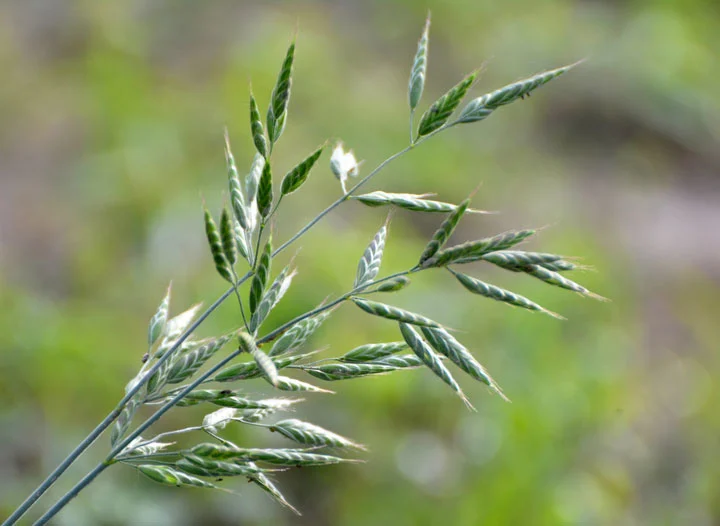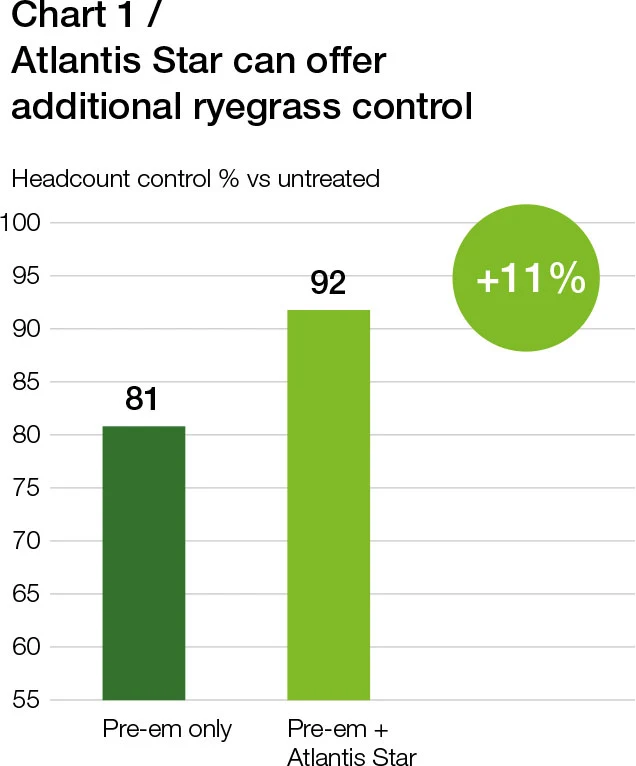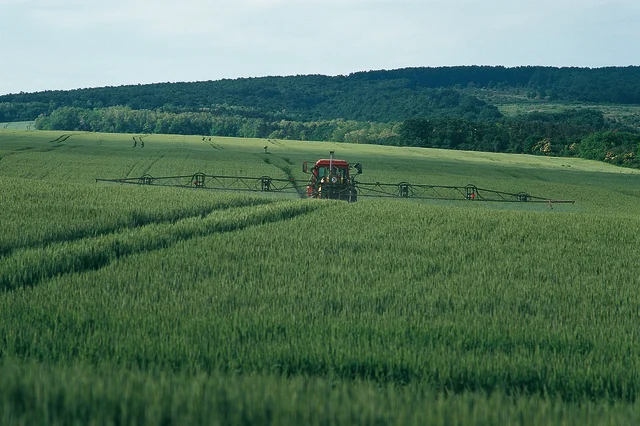Published on 22nd February 2024
Weed Management
Achieving more with post-ems

The introduction of a new active for post-emergence grass-weed control in 2023 provided a vital increase in efficacy to prevent weed populations running out of control. Thiencarbazone is part of a three-way mix with the trusty duo mesosulfuron + iodosulfuron in Atlantis Star, which controls a range of grass-weeds in wheat.
“This is the first post-em for wheat with three grass-weed actives,” explains Bayer’s Tom Chillcott. “The inclusion of a third active offers 5-10% better grass-weed control compared to the next-best option.
Mr Chillcott says getting good results from spring post-em herbicides is not straightforward. Firstly, having the right application conditions is not a given; secondly, resistance, particularly in black-grass, can reduce efficacy. “Know the resistance status of your field before applying, ideally from a resistance test. One incidence of poor control in the past isn’t necessarily resistance. Ten percent of black-grass samples Bayer receive due to suspected resistance are in fact susceptible. For Italian ryegrass that climbs to 58%, so it’s worth double checking before ruling out post-ems.”
Atlantis Star performed well in its first year, but weather conditions had an impact on performance. According to Mr Chillcott, early applications of mesosulfuron-based chemistry in February provided better levels of control than later applications to larger weeds. In some cases, the delay was unavoidable because of very wet weather, but where possible, applying early is the right strategy. He points out that one of the benefits of Atlantis Star compared to Pacifica Plus is that the label allows the full rate to be used from 1 February, giving it more weed control potential for February application.
Every percent counts
In North Yorkshire, Frontier agronomist Alistair McKenzie helps clients tackle a wide spectrum of grass-weeds. “We’ve got pretty much everything; black-grass, ryegrass and brome, with varying levels of resistance, but overall, controlling grass-weeds is challenging. When I started in 2010, black-grass and ryegrass issues were rare, but now most farms have grass-weed problems. “Italian ryegrass in particular is becoming more prolific. It’s much harder to kill than black grass with cultural measures like ploughing and late drilling. It’s also very competitive, so you can’t rely on a thick crop like winter barley to outcompete it.”
Despite resistance being a constant problem, he still thinks there is a place for post-ems in the weed control programme. Variability in performance is always a challenge with post-ems, but there are ways to manage it by looking at the whole-farm approach to weed control.
“I find that farms with more robust cultural control programmes usually get better results with the post-em. Cultural controls like higher seed rates and delayed drilling tend to mean weeds are smaller and less developed in the spring, making them more vulnerable.
“Growth stage is particularly important because you need to apply herbicides before the weed tillers. So, in early drilled crops, there is probably a smaller window of opportunity to spray in spring.”
In fields where there is a good chance of success, Mr McKenzie will use Atlantis Star this spring. “Most post-em options are based on mesosulfuron and iodosulfuron, adding thiencarbazone means there is another grass-weed active that can tip us over the edge and give us more kill.
“Once you’ve decided to go with a post-em, it makes sense to use the best available product.”
He emphasises that Atlantis Star is the last step in the programme to reduce populations, but it cannot clean up very messy fields. Cultural controls and pre-ems deliver around 90% overall weed control in the programme. The post-em adds another 5-7%, pushing total control past 95%, which is generally considered the benchmark to stop the weed seedbank increasing.
“It did quite well last season, but unfortunately, the conditions in spring meant grass-weeds tillered extensively, up to 25 per plant, so there were often high weed head-counts even though plant numbers were relatively low.”


Timing is everything
Application timing and conditions are the other factors partly under farmers’ control to achieve a better result. Mr McKenzie favours getting on as soon as possible in February or March to hit weeds when they are small.
“Soil temperature of 6-7°C and daytime temperature of 10-12°C will kick off the active growth you need for the product to work. Sunshine on the day of application also seems to contribute to better control and at most a gentle breeze.
“Once you have these conditions, apply the post-em. We all know the weather is unpredictable, so this could be in the first week of February or the end of March, so be prepared.”
Optimise spray timing Bayer’s UK team is looking to build on the success of their colleagues in Denmark who have introduced a timing tool for Atlantis-type products.
Danish farmers can search by post code for a spray recommendation helping them identify when active growth has started. In Denmark, they closely scrutinised trials data and found that farmers and agronomists tend to take a cautious approach and wait for slightly warmer temperatures than necessary before applying, potentially missing early spray windows when weeds are smaller and easier to control.
This spring, the UK team will test and develop a UK version of the tool. They want to include additional parameters, particularly sunshine which anecdotally is linked with improved mesosulfuron performance.
Key messages
Post-ems are a useful addition to weed control programmes
Check resistance status first
Target smaller, actively growing weeds
Co-formulation of three actives in Atlantis Star controls a range of weeds



